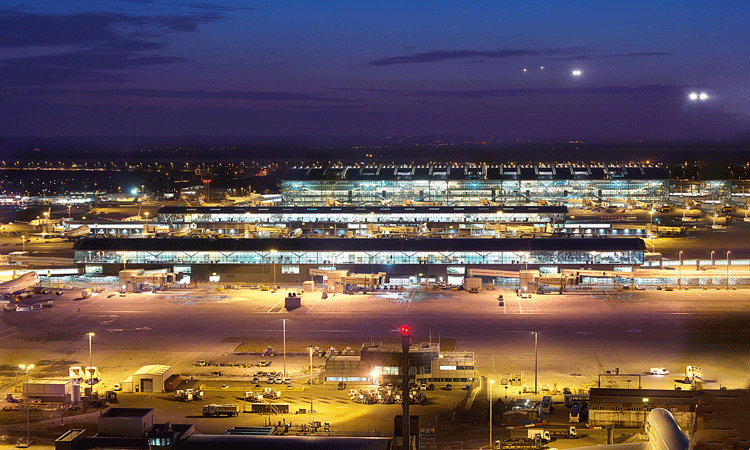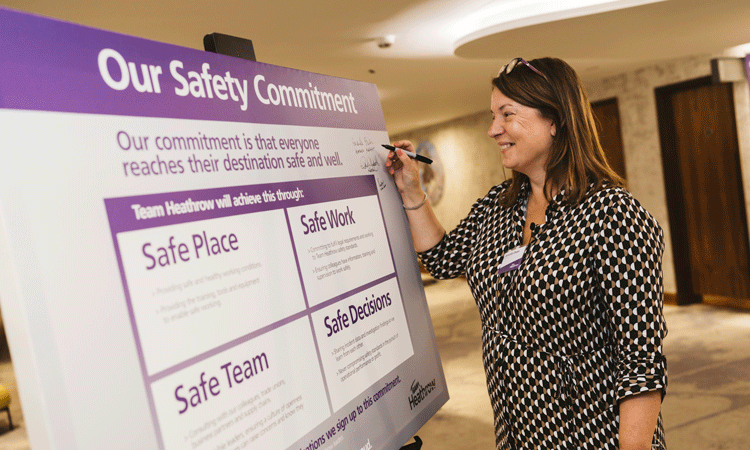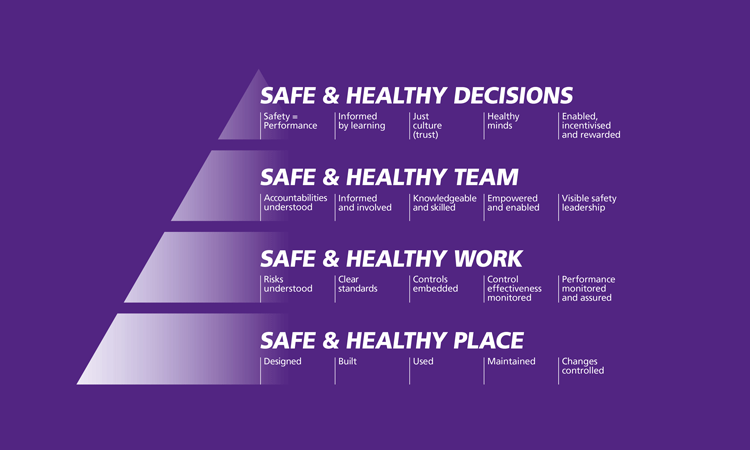Transforming airport safety culture and occupational health
- Like
- Digg
- Del
- Tumblr
- VKontakte
- Buffer
- Love This
- Odnoklassniki
- Meneame
- Blogger
- Amazon
- Yahoo Mail
- Gmail
- AOL
- Newsvine
- HackerNews
- Evernote
- MySpace
- Mail.ru
- Viadeo
- Line
- Comments
- Yummly
- SMS
- Viber
- Telegram
- Subscribe
- Skype
- Facebook Messenger
- Kakao
- LiveJournal
- Yammer
- Edgar
- Fintel
- Mix
- Instapaper
- Copy Link
Posted: 5 March 2024 | Amanda Owen | No comments yet
Amanda Owen MBE London Heathrow Airport’s Health, Safety and Wellbeing Director, details the airport’s approach to occupational safety and what the airport does to guarantee passengers’ security.


Credit: LHR.
AIrports are fascinating and challenging places to keep everyone safe and ensure they reach their destinations/home, safe and well. From a safety perspective, there really is no place like an airport, and certainly no place like Heathrow – critical national infrastructure, a global brand, and the UK’s hub airport that serves over 200 destinations.
Perhaps most significantly, any airport is an ecosystem. At Heathrow, the ecosystem comprises hundreds of companies – tens of thousands of people known as Team Heathrow – serving millions of passengers. The safety of everyone who passes through the airport, as a passenger or colleague, is the product of the myriad decisions made every day by the people who keep Heathrow on the move.
The airport’s Board and Executive Team have set a strategic ambition of leading the airport industry to set the highest standards of occupational safety by 2026. But as they say, culture eats strategy for breakfast.
Heathrow’s approach to safety culture
Like many others, I believe that culture shows up by the way people behave when no one is looking. There are many factors that influence culture, and we needed our approach to be both comprehensive and as simple as possible to understand.
From that thinking, the Heathrow safety culture framework was borne. It includes 20 key factors that combine to create a safer culture grouped into the pillars of: safe and healthy place; safe and healthy work; safe and healthy team and safe and healthy decisions. Informed by the Bradley Curve most, if not all, of the components will be very familiar to safety professionals, with the additional focus on ‘healthy minds.’
The lessons from COVID-19
While the framework itself was informed by established safety models – combined with leading thinking on human factors – Heathrow’s approach to its development and implementation has been informed by lessons from COVID-19.
As we were developing the framework and strategy, the pandemic hit. While the impacts are still being felt both in our industry and more widely, COVID-19 taught us much about the value of closer collaboration. The close-working relationships forged over the pandemic that were needed to lead the response, stood us in good stead to build on the one-team mindset. Working together with the government and our partners, Heathrow was able to facilitate the UK’s largest private COVID-19 testing facility which achieved a 4* in COVID-19 safety rating by Skytrax, the highest achieved by a UK airport.
The only way to drive the highest safety standards in Heathrow’s complex ecosystem is to join forces with Team Heathrow organisations. Building on existing collaboration, Emma Gilthorpe, Heathrow’s Chief Operating Officer, invited senior operational leaders from across Team Heathrow to a Safety Summit in June 2022, to share her own and the Board’s commitment to safety and to invite those organisations to measure safety culture together in a consistent way.


Amanda Owen signing Team Heathrow Safety Commitment. Credit: LHR
Safety culture measurement
To measure consistently and robustly, Heathrow partnered with Safe365, who are leaders in the field of enabling businesses to assess, manage and improve safety culture.
For the first round of measurement, Heathrow kept it simple by measuring against 10 of the factors in the safety culture framework. Despite the simple approach, the results provided significant insight to the individual organisations and to the Team Heathrow safety culture, both in terms of where existing good practice could be leveraged and where resources should be prioritised.
Committing to improving together
The results and insights were shared with operational leaders at the second Safety Summit in October 2022, and here Emma Gilthorpe asked Team Heathrow to commit to working together to deliver the highest safety standards.
Our first task was to define and agree our collective ambition as a Heathrow leadership team across the ecosystem. Team Heathrow Safety Council (a group of the most senior health and safety leaders from Team Heathrow organisations) worked together to determine our safety commitment – the first symbolic act that started to establish our common language and common focus for safety. The safety commitment was signed by leaders across Heathrow on Thursday 26 April 2023.


Credit: LHR
So, what’s next?
We are currently in our second round of measurement, the findings from which will be presented to Team Heathrow’s operational leaders as part of our Airport Safety Week in November. This time we are measuring against all 20 factors in our framework using a five-level maturity assessment, leveraging the best of Safe365’s digital platform, benchmark data sets and substantial question sets.
As a result, each organisation will receive its ‘safety culture index score’; we will then aggregate these into a Team Heathrow score for the whole airport. Heathrow’s internal safety culture index is currently 73%, above the UK benchmark of 56% by some margin, but not yet at the very highest standards to which we aspire.
Safety culture measurement will be a feature of the way we manage safety going forward, but we aren’t stopping there.
Benchmarking occupational safety performance across airports is not straightforward, given the complexity of our operations. The traditional measure of lost time injury frequency rates (LTIFR) tells us something but not the whole story. Importantly LTIFR don’t help identify and share good practices so that the ‘rising tide lifts all boats.’
That’s why we are starting to work with other airports to create a safety culture benchmark, specifically for airports. We are in discussions with a number of airports and are delighted that the executive team at Matar’s Hamad International Airport (DIA) has seen the value in our approach to safety culture measurement.
Michael McMillan, Senior Vice President of Facilities Management at Hamad International Airport, said: “At MATAR’s Hamad International Airport – Qatar, we are committed to excellence in every aspect of our operation, including health and safety. Our five-year strategy includes our commitment to benchmarking so that we can share best practice and learnings with peers. Since airports are unique environments, we are pleased to be able to work with expert service providers to measure our safety culture and work with Heathrow to create an international airport safety benchmark.”
As we have seen from other industries, it takes time for safety cultures to mature. A feature of mature cultures is learning and that’s the main purpose of the safety culture benchmark- to gain insights from within our own organisation and learn from others.
If any airports are interested in learning more about our approach or joining us in measuring safety culture, I would be delighted to hear from you.



















